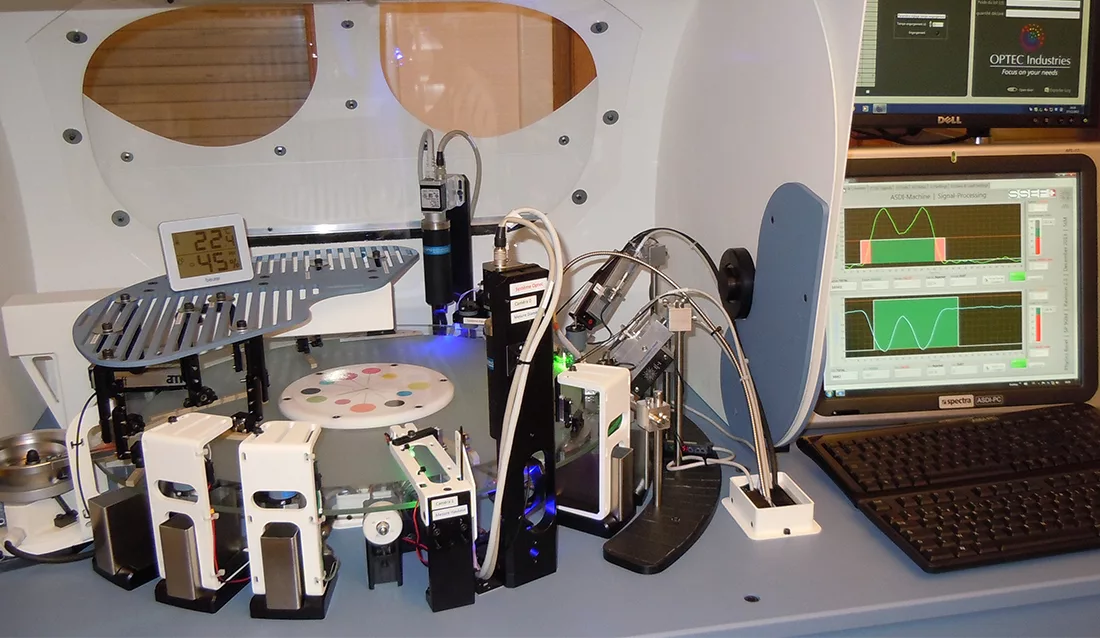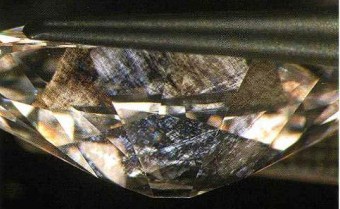
Two exceptional asteriated diamonds
by Dr. L. Speich & J.-P. Chalain, first published in Facette 27 (June 2021)

Recently, SSEF received two so-called asteriated diamonds for authentication. Asteriated diamonds are rare and highly prized amongst collectors for their beautiful and unique appearance.
The two stones received in our lab were no exception. The two polished rough crystals (3.72 and 3.77 ct) contained brownish to whitish clouds of microscopically small inclusions that formed a star-shape in three dimensions that is visible with the naked eye.
One of the two stones is an almost perfect octahedron with resorbed corners and edges that have been partly polished (see Figure 1). It shows six lobes of inclusion clouds that radiated from the centre of the crystal to its corners. The other stone had a flattened shape with one three- and one six-sided face on opposite sides. The star-shaped clouds in this stone formed three petals that extended from a point close to the centre of the six-sided face towards the corners of the triangular (octahedral) face.
At first glance, the second stone looked similar to a macle (a twin occurring along a plane parallel to the octahedral face), however macles usually have two trigonal (octahedral) faces on opposite sides and show re-entrant angles. Both features were absent on this stone. A more likely explanation for its shape is that the stone represents only half of an octahedron that is truncated at the centre of growth in a plane parallel to one of the octahedral crystal faces. This would result in the described shape while also explaining why three instead of six lobes of inclusions were visible in this stone. There were no visible remnants of the missing three lobes near the hexagonal face, indicating that the stone was not cut or cleaved to achieve this shape. Instead, the shape may have occurred naturally in the Earth’s mantle, due to a restriction in growth on one side.
A three-dimensional model of the two stones can be viewed by scanning the following QR-code with your smartphone:

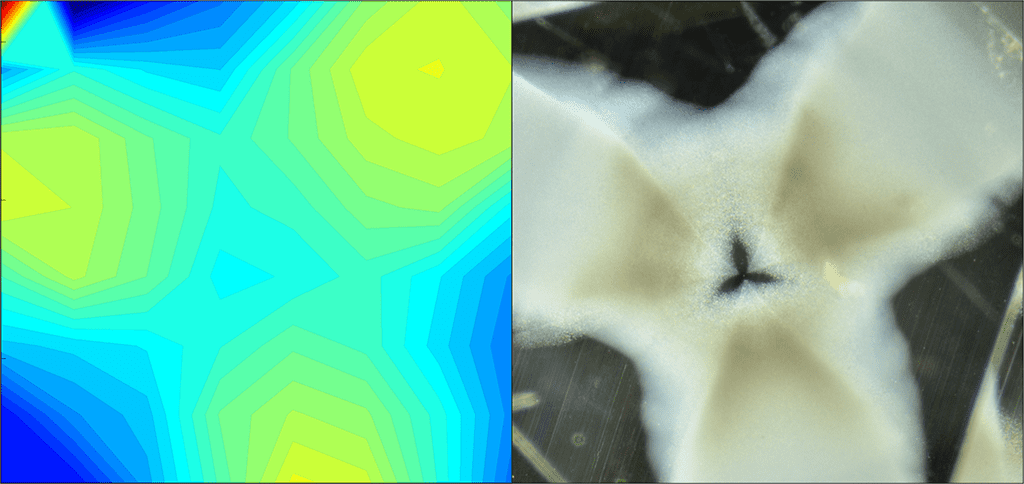
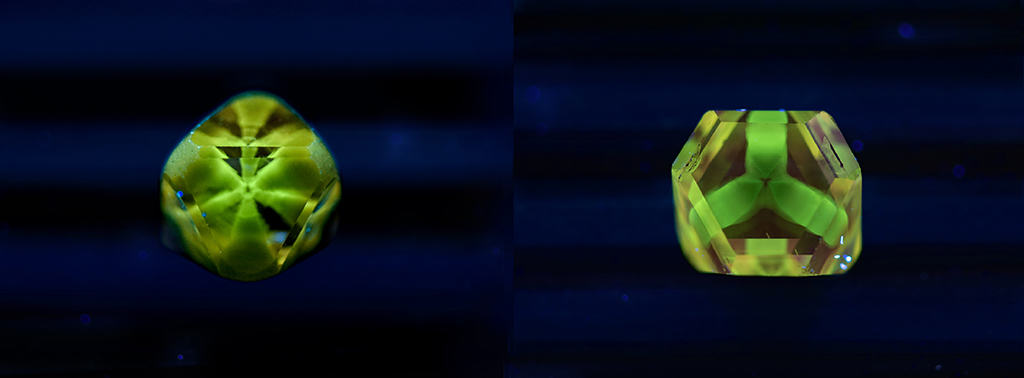
Infrared (IR) spectroscopy revealed that both stones contain traces of aggregated nitrogen and are relatively rich in hydrogen. IR-mapping was performed on the flat three-lobed stone. A series of measurements was performed following an imaginary grid on the triangular face of the diamond. The intensity of the peak at 3107 cm-1 caused by the VN3H defect, was measured in each spot and the result used to create a ‘map’ that shows the distribution of this defect within the stone in 2-d (see Figure 2). The H-rich zones seen in the map agree exactly with the position of the visible lobes, confirming previous measurements on asteriated diamonds (Rondeau et al. 2004).
When viewed under conventional long-wave ultraviolet (UV) light (365 nm), the two stones show a relatively strong yellowish to green fluorescence that is strongest in the H-rich lobes (see Figure 3). DiamondView imaging did not reveal the same features. Instead, both stones show an irregular pattern of weak blue fluorescence. Additionally, the stone with six lobes showed weak greenish fluorescence towards the octahedral corners when viewed using the DiamondView instrument. No phosphorescence was observed.
The star-shaped internal features seen in asteriated diamonds are a form of sector zoning that develops when cuboid and octahedral sectors grow simultaneously. Hydrogen is incorporated preferentially into the cuboid sectors, whereas nitrogen concentration is higher in the octahedral sectors. The petal shape of the growth structure can be explained by variations in relative growth of the two types of sectors. The appearance of the cuboid sectors is caused by light scattered on ‘disk-crack-like’ inclusions that can be opaque or transparent and have been shown to contain graphite (Howell et al. 2013 and references therein).
REFERENCES
Howell D., Griffin W., Piazolo S., Say J.M., Stern R.A., Stachel T., Nasdala L., Rabeau J.R., Pearson N.J., O’Reilly S.Y.: A spectroscopic and carbon-isotope study of mixed-habit diamonds: Impurity characteristics and growth environment, American Mineralogist 98 (2013), 66-77.
Rondeau B., Fritsch E., Guiraud M., Chalain J.-P., Notari F.: Three historical ‘asteriated’ diamonds: growth history and sector-dependent impurity incorporation, Diamond & Related Materials 13 (2004), 1658-1673.
Want to learn more about diamonds?
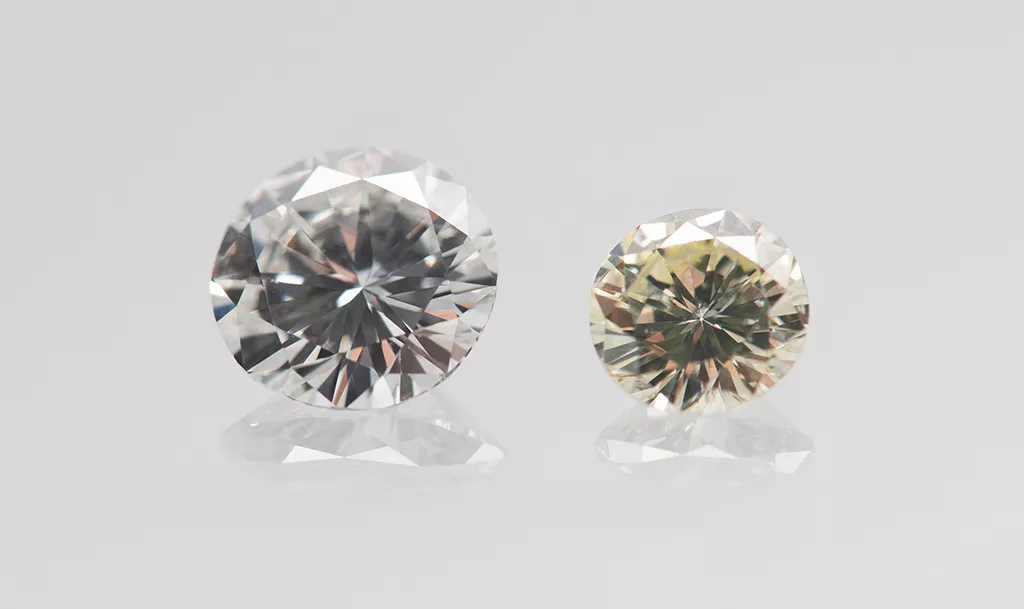
Sign up for our free online course: Introduction to diamonds

